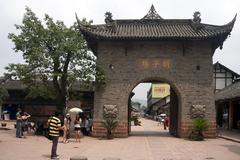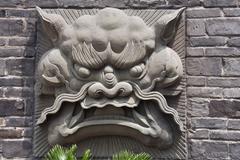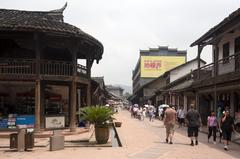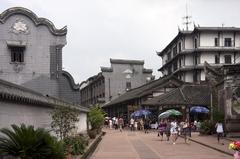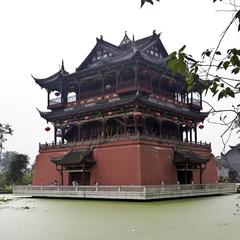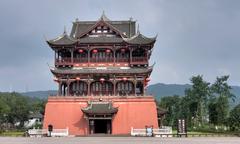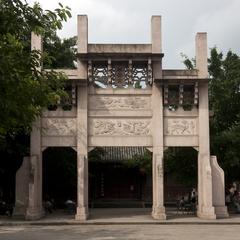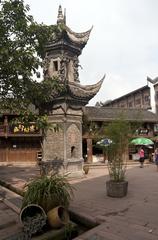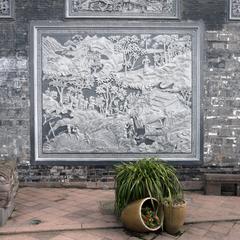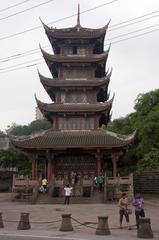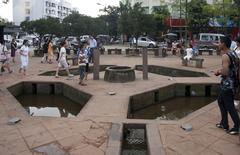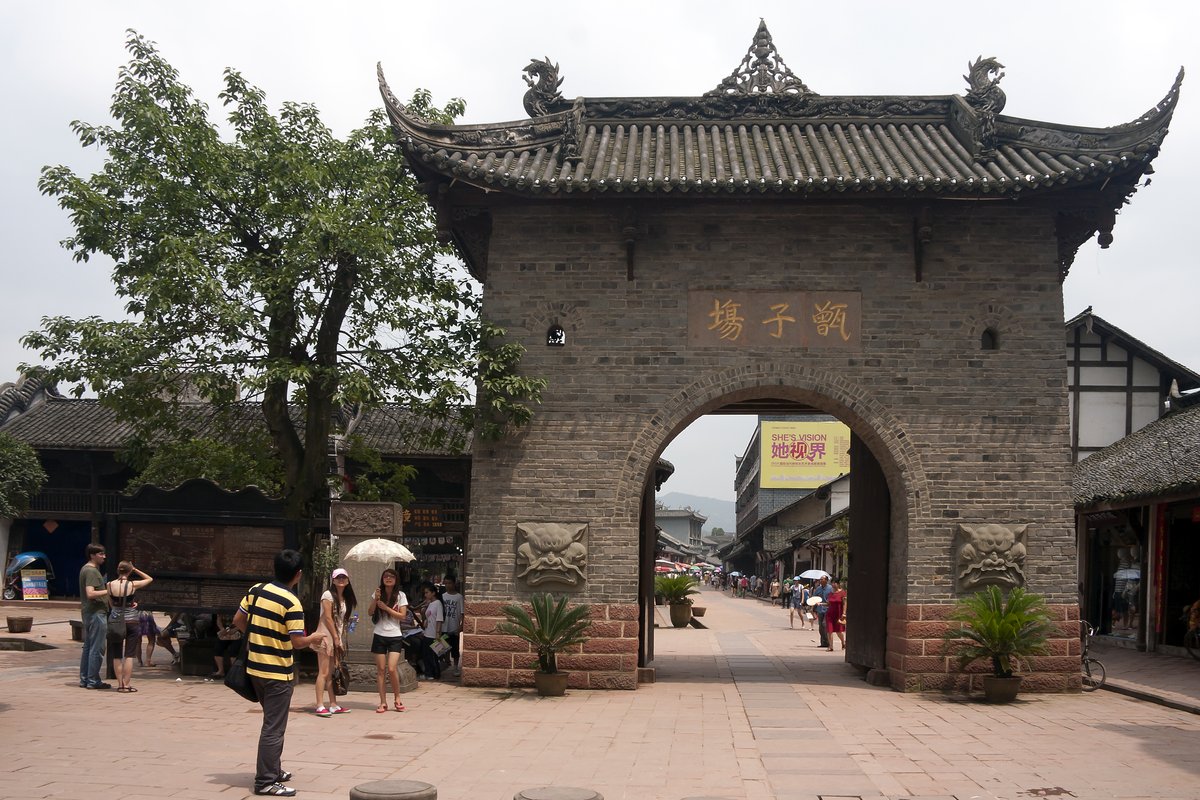
Luodai Town Chengdu: Comprehensive Guide to Visiting Hours, Tickets, and Historical Sites
Date: 15/06/2025
Introduction
Located just 18–20 kilometers east of Chengdu, Luodai Ancient Town is celebrated as the world’s first Hakka town and the most significant Hakka settlement in southwest China. With a history spanning over 1,800 years, Luodai serves as a vibrant living museum of Hakka culture, offering visitors a unique insight into the traditions, architecture, and social life of this distinctive Han Chinese subgroup. The town is renowned for its well-preserved Ming and Qing dynasty architecture, its role as a cultural and migration hub, and its annual festivals that continue to enliven the community today. Whether you are a history enthusiast or a cultural explorer, Luodai Ancient Town is an essential stop for anyone interested in experiencing the depth of Chengdu’s historical sites and the enduring legacy of Hakka heritage (CGTN, China Highlights, EasyTourChina).
Table of Contents
- Early Settlement and Historical Context
- Hakka Migration Patterns to Luodai
- Architectural Heritage and Urban Layout
- Social and Cultural Significance
- Demographic and Economic Evolution
- Visitor Information (Hours, Tickets, Getting There, Accessibility)
- Major Festivals and Cultural Events
- Local Cuisine and Shopping
- Nearby Attractions
- Frequently Asked Questions (FAQ)
- Conclusion
- References
Early Settlement and Historical Context
Luodai’s origins trace back over 1,800 years to the Three Kingdoms period (220–280 CE), when it served as a strategic outpost along the ancient Shu roads. Its name, “Luodai,” is derived from a local legend about a jade belt dropped by a Shu Kingdom official, symbolizing its historical role as a civil and migratory hub (Chengdu Government).
Hakka Migration Patterns to Luodai
Origins and Identity
The Hakka people, known as “guest families” (客家), originally migrated from northern China, settling in southern provinces like Guangdong and Fujian during periods of political upheaval, particularly in the late Tang and Song dynasties (Britannica).
Migration to Sichuan and Luodai
Significant waves of Hakka migration to Sichuan, including Luodai, occurred during the Ming and Qing dynasties. Following regional depopulation in the Ming-Qing transition, the Qing government encouraged resettlement from Huguang, Guangdong, and Fujian, resulting in a strong Hakka presence in Luodai (China Heritage). By the 18th century, the majority of Luodai’s population was of Hakka descent, a legacy that continues today with over 85% of residents tracing Hakka roots (CGTN).
Cultural Integration
Despite being migrants, the Hakka community in Luodai has preserved its unique language, customs, and architectural features, while also integrating aspects of Sichuan culture (Sixth Tone).
Architectural Heritage and Urban Layout
Hakka Architecture
Luodai is characterized by narrow stone-paved streets, wooden storefronts, and inward-facing courtyard houses. The town’s design emphasizes security and communal living, with high walls and intricately carved wooden doors. Unlike the famous tulou roundhouses of Fujian, Luodai’s Hakka houses are more rectangular but retain the essential elements of communal architecture (China Highlights).
Key Heritage Sites
- Five Phoenix Tower: A 19-meter-high wooden landmark from the Qing dynasty symbolizing Hakka resilience.
- Hakka Guild Halls: Four grand halls—Guangdong, Jiangxi, Huguang, and Chuanbei—served as centers for social, religious, and commercial life. These halls feature ornate woodwork, elaborate stages, and symbolic motifs (EasyTourChina).
- Octagon Well: Central to local folklore and the town’s name.
- Hakka Museum: Showcases Hakka history, migration, and daily life.
Many of these landmarks are protected under Luodai’s status as a National Historical and Cultural Town (UNESCO Asia-Pacific Heritage Awards).
Social and Cultural Significance
Festivals and Rituals
Luodai is renowned for its vibrant festivals:
- Fire Dragon Festival: Celebrated during Chinese New Year with dragon dances, music, and fireworks (chinatripedia.com).
- Water Dragon Festival: Held annually in July with ritual water-splashing, dragon boat races, and communal feasts (chinahighlights.com).
- Other events: Traditional music, lantern displays, and Hakka culinary fairs.
Language and Oral Traditions
Mandarin is widely spoken, but the Hakka dialect endures among older generations. Storytelling, folk songs, and proverbs remain vital parts of the local oral tradition (Sixth Tone).
Demographic and Economic Evolution
Luodai’s population is approximately 23,000, with a strong Hakka majority. Historically reliant on agriculture and trade, the town has shifted its economic focus to tourism, drawing millions of visitors annually before the COVID-19 pandemic. Tourism supports local businesses, preserves heritage, and promotes cultural performances (China Daily).
Visitor Information
Visiting Hours and Ticket Information
- Luodai Ancient Town: Open daily; most visitors arrive between 8:00 AM and 6:00 PM.
- Hakka Museum: Open Tuesday to Sunday, 9:00 AM–5:00 PM; closed Mondays.
- Admission: Entry to the town is free. Individual attractions such as the Hakka Museum and certain guild halls may charge a nominal fee (10–30 RMB) (Sichuan Travel Guide).
Getting There
- By Bus: Direct buses from Xinnanmen Bus Station in Chengdu. City buses to Wuguiqiao Bus Stop, then transfer to bus 219 (China Dragon Tours).
- By Metro + Bus: Metro Line 4 to Xiehe Station, then bus 219 or L042 (chinatripedia.com).
- By Taxi or Ride-hailing: Journey time 30–40 minutes.
- By Private Tour: Local agencies offer guided experiences.
Accessibility
While the main streets are navigable, stone-paved surfaces and narrow alleys may pose challenges for wheelchair users. Some heritage buildings are not fully accessible.
Major Festivals and Cultural Events
- Fire Dragon Festival: Features the Liu Family Dragon Dance and festive celebrations.
- Water Dragon Festival: The most significant Hakka festival, held in summer, honoring the Dragon King.
- Other celebrations: Lantern festivals, culinary fairs, and music performances fill the calendar year (china highlights).
Local Cuisine and Shopping
- Signature Dishes: Salt-baked chicken, stuffed tofu, Hakka rice wine, and street snacks like tanghulu and fried dough twists.
- Tea Culture: Traditional teahouses serve as social hubs.
- Handicrafts: Paper fans, embroidery, bamboo weaving, and dragon-themed souvenirs are popular (chinatripedia.com).
Nearby Attractions
- Chengdu Wuhou Shrine: Dedicated to Three Kingdoms history.
- Jinli Ancient Street: Known for traditional shops and snacks.
- Dujiangyan Irrigation System: A UNESCO World Heritage site.
- Chengdu Panda Base: Famed conservation center.
- Longquan Mountain: Ideal for hiking and peach blossom viewing.
Frequently Asked Questions (FAQ)
Q: What are the visiting hours for Luodai Ancient Town?
A: The town is open daily, generally from early morning until evening.
Q: Is there an admission fee?
A: Entry to the town is free; some attractions may charge a fee (10–30 RMB).
Q: How do I get to Luodai from Chengdu?
A: By direct bus, Metro Line 4 + bus, taxi, or private tour.
Q: Is Luodai wheelchair accessible?
A: Main streets are accessible, but some older buildings may not be. Plan ahead if you have mobility needs.
Q: When is the best time to visit?
A: Spring and summer, particularly during the Fire Dragon and Water Dragon Festivals.
Conclusion
Luodai Ancient Town offers a rich, immersive experience into Hakka culture, history, and architecture just outside Chengdu. From its festival-filled calendar to its unique guild halls and vibrant street life, Luodai is both a living heritage site and a welcoming destination for travelers. Plan your visit to coincide with local festivals for the most dynamic cultural encounters, and allow time to explore nearby historical sites for a well-rounded journey through Sichuan’s past and present.
For tailored travel tips, guided tours, and event updates, download the Audiala app and connect with our community on social media.
